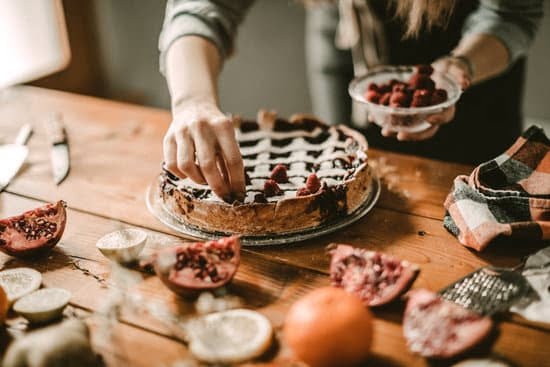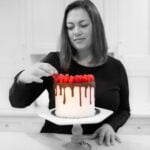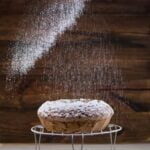Are you wondering how to decorate a fondant cake? Fondant cake decorating is a popular and versatile way to adorn cakes for any occasion, from birthdays to weddings. This article will guide you through the process of creating beautifully decorated fondant cakes, covering everything from choosing the right fondant to troubleshooting common decorating mistakes.
Fondant cake decorating involves using a smooth, pliable icing made of sugar, water, and gelatin to cover and decorate cakes. It provides a clean and polished finish that allows for intricate designs and creativity. Whether you’re a beginner or an experienced baker, mastering the art of fondant cake decorating can take your baking skills to the next level.
In this article, we’ll discuss everything from preparing your cake for fondant decoration to essential tools and equipment needed for successful decorating. We’ll also explore basic and advanced techniques, adding color and flair to your designs, as well as troubleshooting common mistakes. By the end of this guide, you’ll have the knowledge and confidence to create stunning fondant-decorated cakes that are sure to impress.
Choosing the Right Fondant for Your Cake
Understanding Different Types of Fondant
When it comes to choosing the right fondant for your cake, it’s important to understand that there are different types available in the market. Rolled fondant, poured fondant, and sculpting fondant are some of the most commonly used types. Rolled fondant is ideal for covering cakes, while poured fondant is great for creating a smooth glaze or filling. Sculpting fondant, on the other hand, is perfect for creating intricate decorations and figures.
Factors to Consider When Choosing Fondant
When selecting the right fondant for your cake, it’s essential to consider factors such as flavor, texture, and color. Some fondants have a sweeter taste, while others have a more neutral flavor that can be easily customized with extracts or flavors. Texture also plays a crucial role in how easy it is to work with the fondant and achieve smooth results. Additionally, consider the color options available as some brands offer a wide range of vibrant colors.
Where to Purchase Quality Fondant
To ensure that you are using high-quality fondant for your cake decorating endeavors, it’s important to purchase from reputable suppliers or brands. Many specialty baking stores and online retailers offer a variety of fondants to choose from. It’s recommended to read reviews and seek recommendations from fellow bakers to find the best quality fondant for your specific project.
By understanding different types of fondants, considering key factors when choosing one, and knowing where to purchase quality products, you can set yourself up for success when decorating your fondant cake.
Preparing the Cake for Fondant Decoration
Before you begin decorating your fondant cake, it is essential to properly prepare the cake for the fondant application. Here are some steps to ensure that your cake is ready for fondant decoration:
1. Leveling the Cake: Use a long serrated knife to carefully level the top of your cake layers to ensure that they are flat and even.
2. Crumb Coating: Apply a thin layer of buttercream or ganache to seal in any crumbs on the surface of the cake. This will create a smooth base for the fondant.
3. Chilling the Cake: Place the crumb-coated cake in the refrigerator for at least 30 minutes to set the buttercream or ganache before applying the fondant.
4. Dusting with Cornstarch: Lightly dust your work surface with cornstarch to prevent sticking, then roll out your fondant to cover your chilled and crumb-coated cake.
By following these preparation steps, you will ensure that your fondant adheres smoothly to the cake surface without any bumps or imperfections.
Once you have prepared your cake for fondant decoration, you can move on to choosing the right fondant and applying basic and advanced decorating techniques to create a stunning and professional-looking finished product.
Essential Tools and Equipment for Fondant Cake Decorating
When it comes to decorating a fondant cake, having the right tools and equipment is crucial to ensure a successful and beautiful result. Here are some of the essential items you will need for fondant cake decorating:
1. Rolling Pin: A good quality rolling pin is essential for rolling out the fondant to the desired thickness. It should be long enough to cover the entire surface of the cake.
2. Fondant Smoother: This tool is used to smooth out the fondant after it has been draped over the cake, ensuring a flawless finish.
3. Modeling Tools: These small, handheld tools are used for creating intricate designs, patterns, and textures on the fondant.
4. Piping Bags and Tips: If you plan on adding piped details or decorations to your fondant cake, make sure you have a variety of piping tips and bags on hand.
5. Embossing Mats: These mats are used to create textured designs on the surface of the fondant before it is placed on the cake.
6. Edible Glue or Water Brush: To adhere fondant pieces together or attach decorations, edible glue or a water brush will come in handy.
7. Turntable: A turntable makes it easier to rotate and decorate the cake from all angles without having to constantly move it around manually.
8. Cornstarch or Powdered Sugar: Dusting your work surface with cornstarch or powdered sugar prevents the fondant from sticking as you roll it out.
Having these essential tools and equipment readily available will make decorating your fondant cake much easier and more enjoyable.
| Essential Tools | Equipment |
|---|---|
| Rolling Pin | Fondant Smoother |
| Modeling Tools | Piping Bags and Tips |
| Embossing Mats | Turntable |
Basic Fondant Cake Decorating Techniques
Fondant cake decorating can seem intimidating to beginners, but with the right techniques, anyone can create a beautifully decorated cake. Here are a few basic fondant cake decorating techniques to help you get started:
1. Rolling out the fondant: Before you can begin decorating your cake with fondant, you need to roll it out to the right thickness. Sprinkle some powdered sugar or cornstarch on your work surface to prevent the fondant from sticking, then use a rolling pin to roll it out into a thin, even layer.
2. Covering the cake: Once your fondant is rolled out, carefully drape it over your prepared cake. Smooth the fondant gently with your hands, starting from the top and working your way down the sides of the cake to prevent air bubbles from forming.
3. Creating simple shapes and designs: Use cookie cutters or fondant cutters to create basic shapes like flowers, leaves, or hearts out of colored fondant. These can be placed on top of the cake as decorations or used to create borders around the edges.
These basic techniques are a great starting point for anyone learning how to decorate fondant cakes. Once you have mastered these skills, you can move on to more advanced techniques and begin experimenting with different colors and designs to create truly unique and stunning cakes.
Advanced Fondant Cake Decorating Techniques
Embossing and Texturing
One advanced technique for decorating fondant cakes is embossing and texturing. This involves creating intricate patterns or designs on the fondant surface to add depth and visual interest to the cake. You can use various tools such as embossing mats, texture sheets, or even household items like lace or fabric to achieve unique patterns on the fondant.
Sculpting 3D Figures and Objects
For those looking to take their fondant cake decorating to the next level, sculpting 3D figures and objects out of fondant is a challenging but rewarding technique. With practice and patience, you can create lifelike flowers, animals, or even miniature sculptures to adorn your cake. This technique requires a steady hand and attention to detail, but the results can be truly impressive.
Painting on Fondant
Another advanced technique for decorating fondant cakes is painting directly onto the fondant surface. Using edible food coloring mixed with clear alcohol or lemon extract, you can paint intricate designs or realistic scenes onto your fondant cake. This technique allows for endless creativity and artistic expression, making it a popular choice for more complex cake designs.
By mastering these advanced fondant cake decorating techniques, you can elevate your cake designs from simple to stunning. Whether you’re creating a show-stopping wedding cake or a whimsical birthday cake, these techniques will help you achieve professional-looking results that are sure to impress any recipient.
Adding Color and Flair to Your Fondant Cake
When it comes to decorating a fondant cake, adding color and flair is where you can really let your creativity shine. There are numerous ways to add color to your fondant, from using gel food coloring to edible dusts and airbrushing. The key is to choose the method that best suits your design and the finished look you want to achieve.
Gel food coloring is one of the most popular methods for adding vibrant colors to fondant. It is highly concentrated, allowing you to achieve intense hues without altering the consistency of the fondant. Simply knead a small amount of gel food coloring into your fondant until the desired color is evenly distributed. Use caution not to add too much coloring at once, as it can quickly become too dark.
Another option for adding color and flair to your fondant cake is by using edible dusts. These come in a variety of shades and can be applied with a soft brush for a subtle shimmer or mixed with clear alcohol to create a paint-like consistency for more intricate designs. Edible dusts are perfect for adding dimension and depth to your decorations.
Airbrushing is a technique that allows you to achieve smooth transitions between colors and create beautiful gradients on your fondant cake. With an airbrush machine and edible airbrush colors, you can spray a fine mist of color onto your cake, giving it a professional finish. This method is ideal for achieving ombre effects or creating realistic-looking designs such as watercolor paintings or floral patterns.
| Decoration Method | Description |
|---|---|
| Gel Food Coloring | Highly concentrated coloring for intense hues without altering consistency |
| Edible Dusts | Used for subtle shimmer or mixed with clear alcohol for paint-like consistency |
| Airbrushing | Allows smooth transitions between colors and professional-looking gradients |
Troubleshooting Common Fondant Cake Decorating Mistakes
Even with the best of intentions, sometimes things don’t go as planned when decorating a fondant cake. It’s important to be prepared for potential mishaps and know how to troubleshoot them effectively. One common mistake when working with fondant is air bubbles forming beneath the surface. To avoid this, gently smooth out the fondant with a fondant smoother or your hands, starting from the center and moving outward to push out any trapped air.
Another issue that may arise is cracking or tearing of the fondant while applying it to the cake. This can often occur if the fondant is rolled too thin or if it dries out before being placed onto the cake. To prevent this, ensure that your fondant is at the right thickness and work quickly but carefully when covering the cake.
Sometimes, despite our best efforts, colors may not turn out as vibrant as we’d hoped on our fondant cakes. To remedy this, consider using gel food coloring instead of liquid food coloring for a more concentrated hue. Additionally, you can add a layer of white fondant underneath colored fondant to make the colors pop.
By being aware of these common mistakes and knowing how to address them, you’ll be better equipped to create a beautifully decorated fondant cake without getting discouraged by any hiccups along the way.
Tips and Tricks for Perfecting Your Fondant Cake Design
Decorating a fondant cake can be both fun and challenging, but with the right tips and tricks, you can perfect your design and create a stunning masterpiece. Here are some helpful suggestions on how to decorate fondant cake like a pro.
When working with fondant, it’s important to keep it at the right consistency. If the fondant is too soft, it will be difficult to work with, and if it’s too hard, it will crack and tear. To achieve the perfect consistency, knead the fondant until it is smooth and pliable. If you find that the fondant is too sticky, you can dust your work surface with powdered sugar or cornstarch to prevent sticking.
Another tip for perfecting your fondant cake design is to use quality tools and equipment. Investing in good quality rolling pins, smoothers, cutters, and shaping tools can make a big difference in the finished look of your cake. These tools will help you achieve clean lines, smooth surfaces, and precise shapes when decorating with fondant.
In addition to using the right tools, practicing different decorating techniques will help you perfect your fondant cake design. Experiment with embossing, quilting, ruffling, sculpting, and other advanced techniques to add depth and texture to your cakes. With practice and patience, you can master these techniques and take your fondant cake decorating skills to the next level. By incorporating these tips into your cake decorating process, you can create beautifully decorated fondant cakes that are sure to impress any audience.
Remember that Rome wasn’t built in a day: It takes time and practice to become skilled at decorating with fondant. But by following these tips and consistently honing your skills, you’ll soon be well on your way to creating stunning works of art that not only look beautiful but taste delicious as well. Keep experimenting with different colors, textures,and designs until you find what works best for you.
Conclusion
In conclusion, decorating a fondant cake can be a fun and rewarding experience for both amateur and seasoned bakers alike. As we’ve covered in this article, the key to successfully decorating a fondant cake lies in choosing the right fondant, preparing the cake properly, and having the essential tools and equipment at hand.
From basic to advanced techniques, adding color and flair, and troubleshooting common mistakes, there are numerous ways to showcase your creativity and skill in decorating a fondant cake.
By following the tips and techniques outlined in this article, you can elevate your fondant cake decorating game to new heights. Whether you’re looking to create a simple yet elegant design or an intricate masterpiece, mastering the art of decorating with fondant can open up endless possibilities for your baking creations.
So, next time you’re tasked with decorating a fondant cake, remember to draw inspiration from various sources, experiment with different techniques, and most importantly have fun throughout the process. With dedication and practice, you’ll be well on your way to creating stunningly decorated fondant cakes that will leave everyone impressed with your skills. So go ahead, unleash your creativity, and showcase your beautifully decorated fondant cakes for all to admire.
Frequently Asked Questions
How Do You Put Decorations on a Fondant Cake?
Decorating a fondant cake requires careful planning and gentle handling. One popular method is to use edible glue or royal icing to attach decorations. It’s important to work quickly and precisely to avoid any cracks or tears in the fondant.
How Do You Stick Decorations to Fondant?
When sticking decorations to fondant, it’s essential to use a small amount of edible glue or water as an adhesive. Applying too much moisture can cause the fondant to become sticky and lose its smooth appearance. Additionally, gently pressing the decorations onto the fondant ensures a secure attachment without damaging the cake’s surface.
How Do You Cover a Cake With Fondant for Beginners?
Covering a cake with fondant as a beginner involves several key steps. Firstly, ensure that the cake is evenly frosted with a thin layer of buttercream or ganache as this provides a smooth base for the fondant. Then, roll out the fondant into a large circle before carefully draping it over the cake and smoothing it out with your hands.
Finally, trim off any excess fondant at the base of the cake for a clean finish. Practice and patience are crucial for beginners mastering this technique.

Welcome to our cake decorating blog! My name is Destiny Flores, and I am the proud owner of a cake decorating business named Cake Karma. Our mission is to provide delicious, beautiful cakes for all occasions. We specialize in creating custom cakes that are tailored specifically to each customer’s individual needs and tastes.





